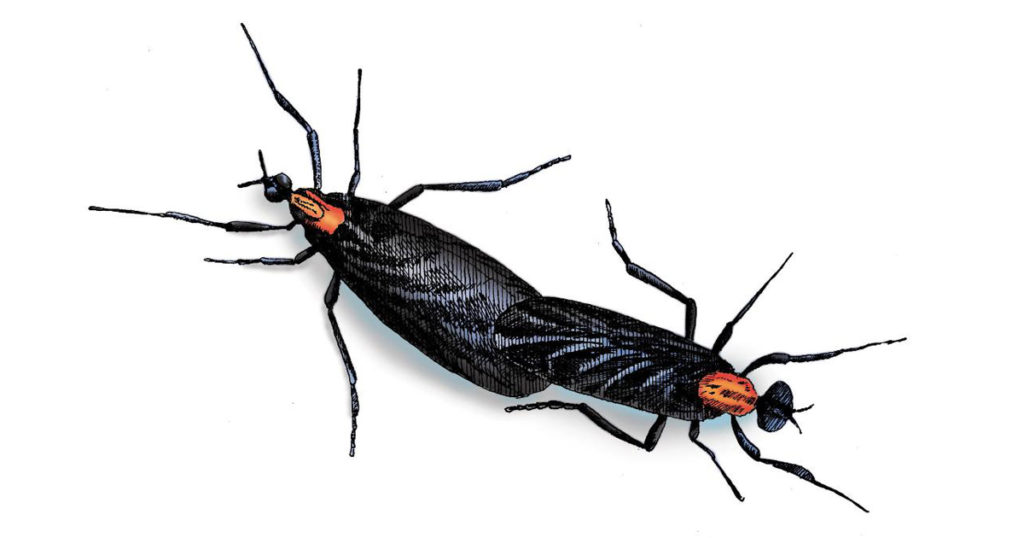
Florida (WTFF) – We’re at the cusp of Lovebug season again, as Floridians and tourists are reporting sightings of the flying f*ckers all over the peninsula.
Lovebugs tend to hover aimlessly over highways, lost in their biological call to reproduce, joined at the genitals. Their acidic remains often end up splattered over the paint and in the radiators of vehicles, much to the ire of drivers.
Their name is suitable.
They fly together attached because they are in fact mating. The male attaches to the female and only disengages during the daytime while resting on vegetation. During flight, they always remain in consummation.
It can take up to 12 hours for the lady Lovebug to get pregnant. Sadly for the pair, she dies within 86 hours of laying eggs, though with the bright prospect of continuing their family. (UF/IFAS)
Even though they’re annoying, they do serve a purpose. Just like some people.
“Lovebugs help the environment when they are in their immature stage,” says Thomas Fasulo, an extension entomologist with UF’s Institute of Food and Agricultural Sciences. (UF/IFAS)
“When grass is cut and the excess falls to the ground, it creates a covering known as thatch, where immature lovebugs live and eat. Through this process they redistribute essential nutrients back into the ground that are beneficial to plants and the environment,” explains Fasulo.
It’s only when they begin boinking and flying around that they begin to “bug” us.
They’re not even really bugs, technically:
The common name Florida lovebugs actually refers to the species Plecia nearctica, a small fly in the family Bibionidae that’s also known as the March flies.
thoughtco.com
Real bugs belong to the order Hemiptera.
Often the locals muse over the origins of Lovebugs.
One rumor states that in the 1950s, an experiment at the at University of Florida went horribly wrong, producing a useless and pesky bug that just flies around f*cking.
“Although most people have heard, or told, this story in some form or another, it’s just not true,” said Thomas Fasulo, who heard the rumor in 1979, during his first year as an entomologist in Florida.
So where did they come from?
The same place all life on this planet came from really…
All we do know is that Lovebugs can be traced back to the tropical areas of Central America. They made their way over to Texas by the 1900s before moving to Florida. (UF/IFAS)
Like the Burmese Python, they are not Florida Natives.


1shepherdess
ya gotta be shi**ting me……of course the university wouldnt own up to these fu**ers…….